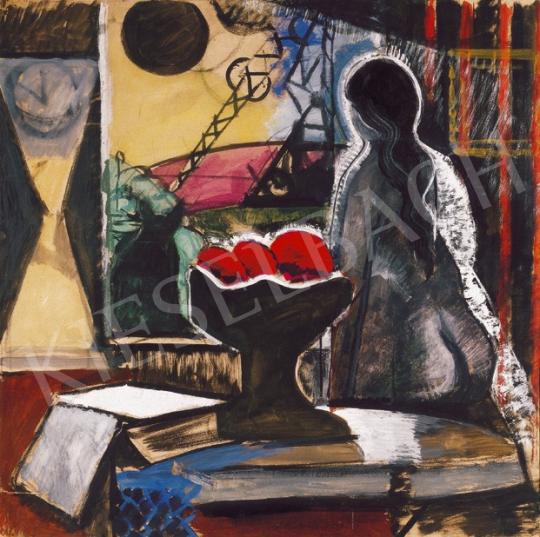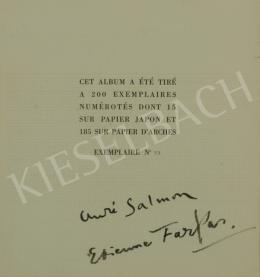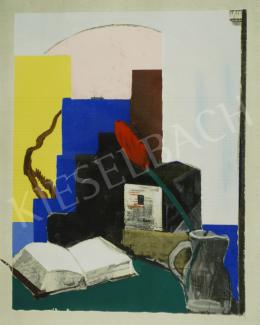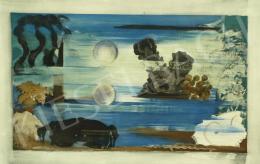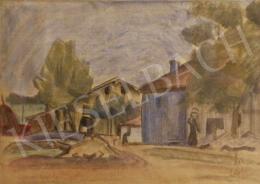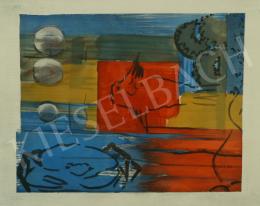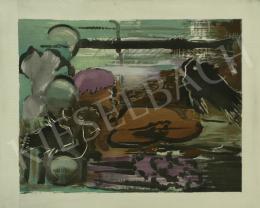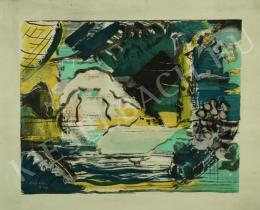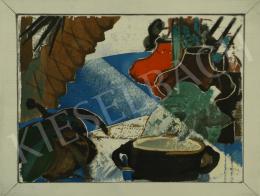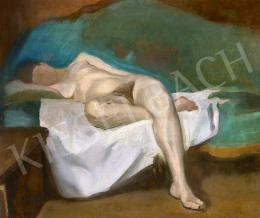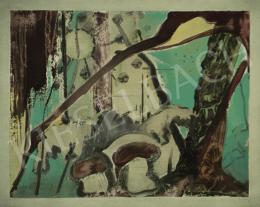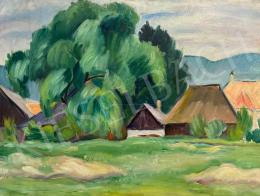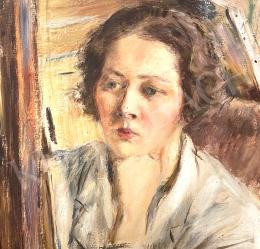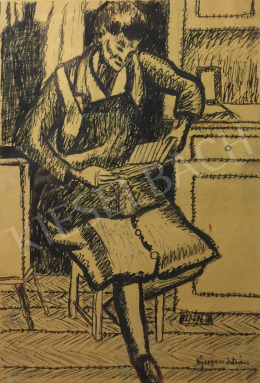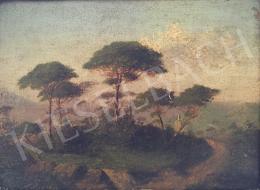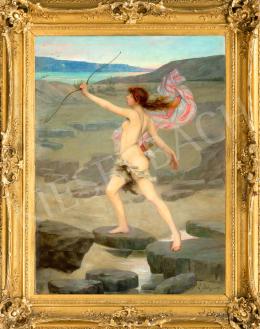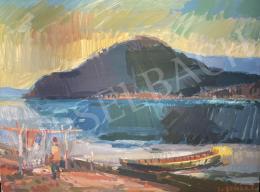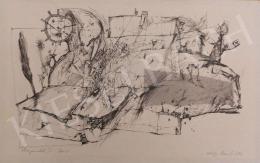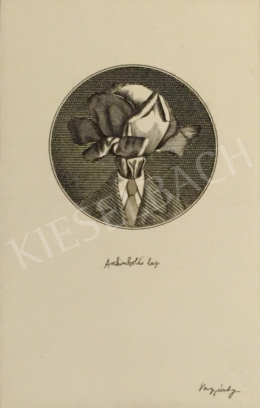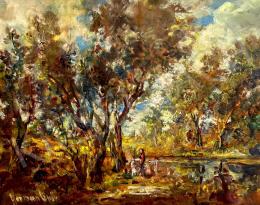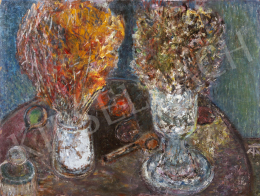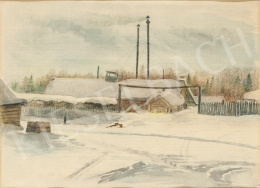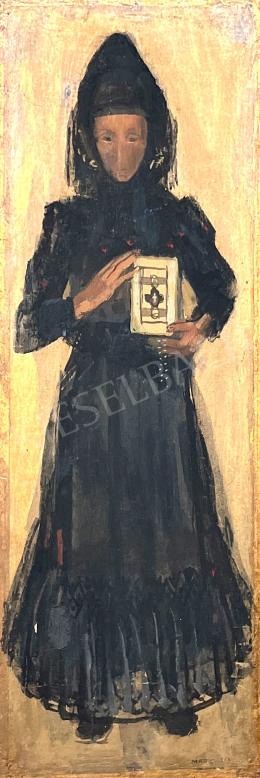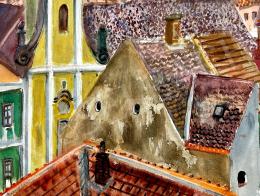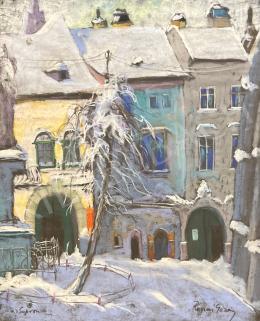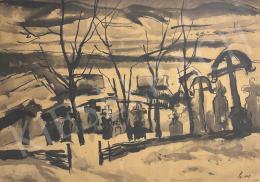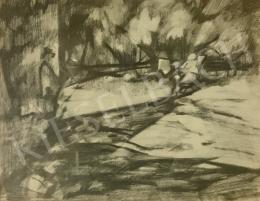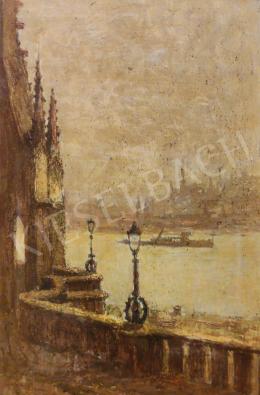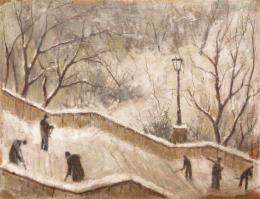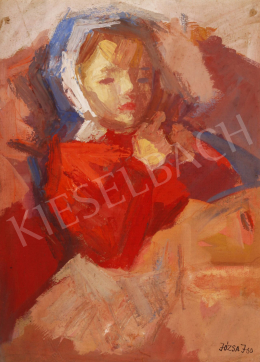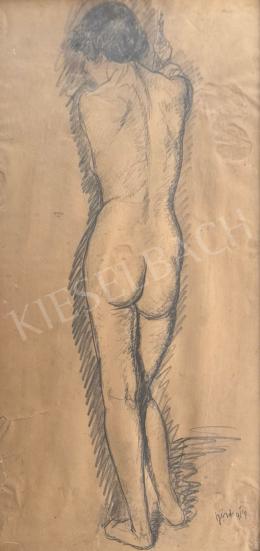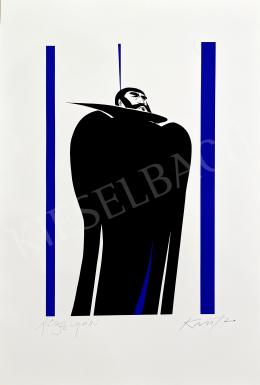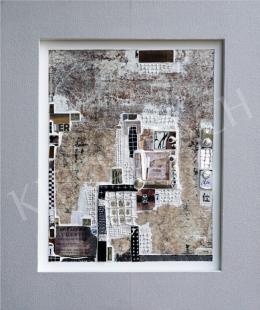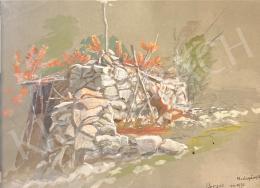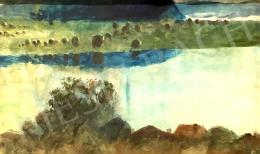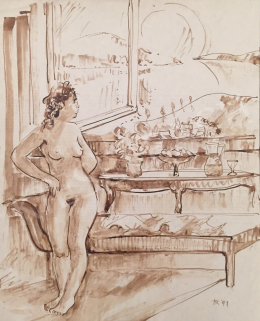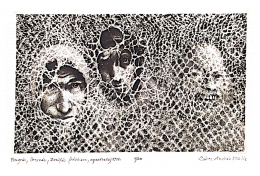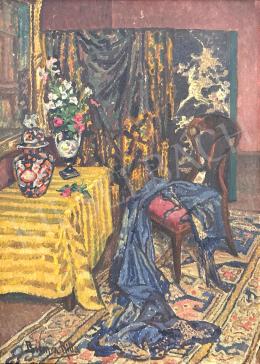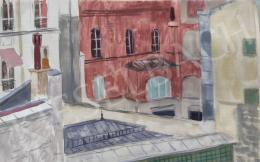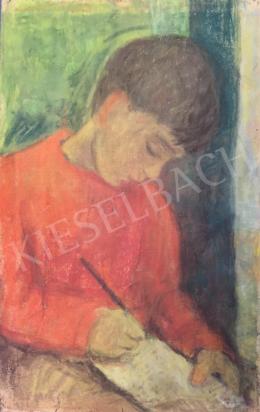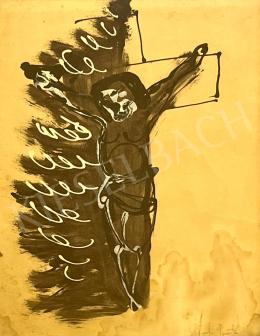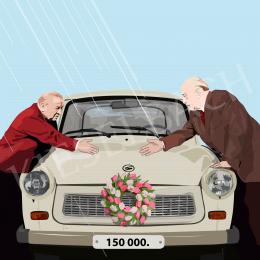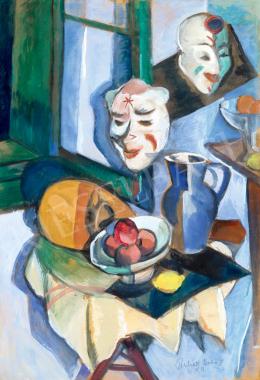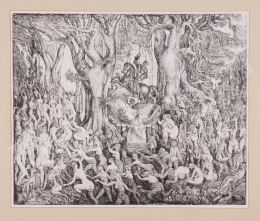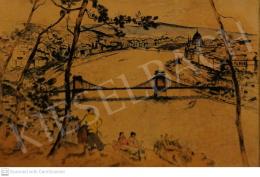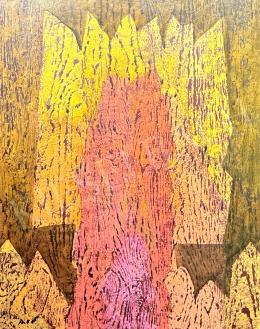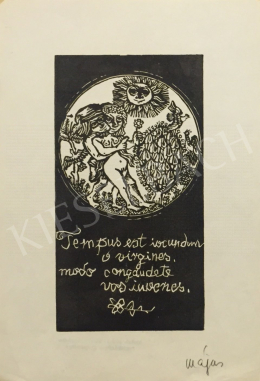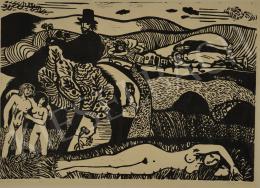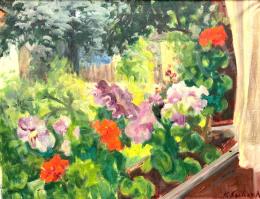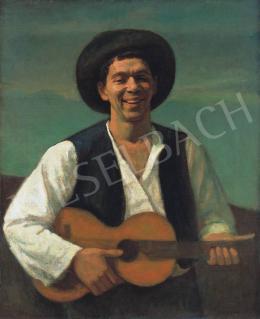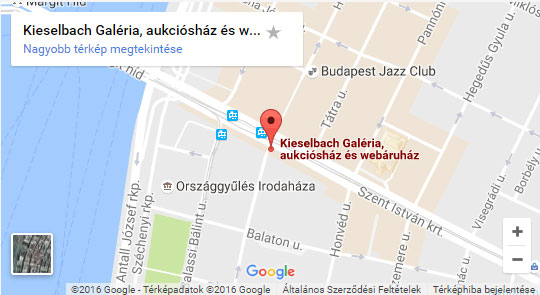Farkas's picture presented here makes the viewer remember how closely modern Hungarian painting was connected to Paris and the French painting of the period at the beginning of the 20th century. Though the second literature speaks rather about the enigmatism of Farkas's art, stressing the exceptionality of his artistic character, in the work discussed here the features connecting the painter to the artists of the period are more dominant.
Farkas also walked the path that was so typical of the young Hungarian painters of the period. After Nagybánya and Munich he went to Paris, where, not like his friends who studied at Julian school, he attended the Académie La Palette, which was the intellectual center of the most modern trends in the 1910's. The artists committed to cubism all attended this academy; Farkas studied under Le Fauconnier and Metzinger together with Ozenfant, Chagall, Léger and the Hungarian József Csáky and Imre Szobotka. His three-year-long stay was interrupted by the outbreak of World War I. After the military service and captivity he settled down in Budapest, but after a long period spent in mental anguish the painter returned to Paris. He revitalised his relationship to his fellows, rent a studio on the Montparnasse and spent his nights with his friends, Alfréd Réth, József Csáky, the French writer André Salmon and the young French painters of the period. He exhibited his pictures at the Salon des Tulileries with Czóbel, Tihanyi, Matisse, Delauney and Giacometti. The leading French art magazines published several appreciative studies on his pictures, which were often reproduced on cover pages. His reputation can be well illustrated by recalling the names of the artists he had a common exhibition with, arranged by the journal 'Montparnasse' in 1930:, Braque, Csáky, Dufy, Flouquet, Foujita, Gleiyes, Gris, Gromaire, Herbin, Le Fauconnier, Leger, Lhote, Marcoussis, Masareel, Masson, Matisse, Picasso, Survage, Vlaminck. Most of them started from cubism and shaped their own style by using its achievements. By that time Farkas's art had been discovered by the collectors and dealers as well. Auguste Perret and Le Courbusier, the two outstanding figures of French architecture did not only buy pictures from him but also joined his circle. His pictures could be found in every important collections of the period; Marcell Nemes, Lajos Fruchter and Simon Meller owned his paintings, and some of his pictures got into the world-famous Chester Dale Collection.
The picture presented here reports from this successful artistic period. On the oval table standing in the foreground of the square picture Farkas put a still-life which is well-known from the works of the cubist artists: a bowl with fruits and an opened book. In the background the window opens to a landscape in which, just as in many of his pictures painted at that time, the viewer can discover elements referring to the rails of the Eiffel-tower. In the left hand corner of the picture a silhouette of a cat can be seen; next to it there is a form which reminds one of a huge sandglass. In the right side of the painting there is a nude of a stepping woman figure from behind, which is shaped as a block. Comparing the finished painting to the sketch of it, the main characteristics of Farkas's creating method are well recognizable. The dominant role of the still-life in the composition is more apparent in the aquarelle sketch. Though the finished work seems to be richer and more elaborated, one has the feeling that Farkas receded more from the primer sight of reality. The black cat, maybe an ill omen, the black sun-disk and the block of the clock stylized into a sign are all motives stressing the transcendent projections of the representation. The borderline between in and out, the momentary movement of the stepping woman and the cruel monotony of time induce deep thoughts in the viewer. Though the composition and forming are very much akin to that of the French painters' of the period (mainly Braque must be mentioned here), its symbolic, spiritual elements make Farkas' picture individual, a masterpiece of the oeuvre.
Molnos, Péter






